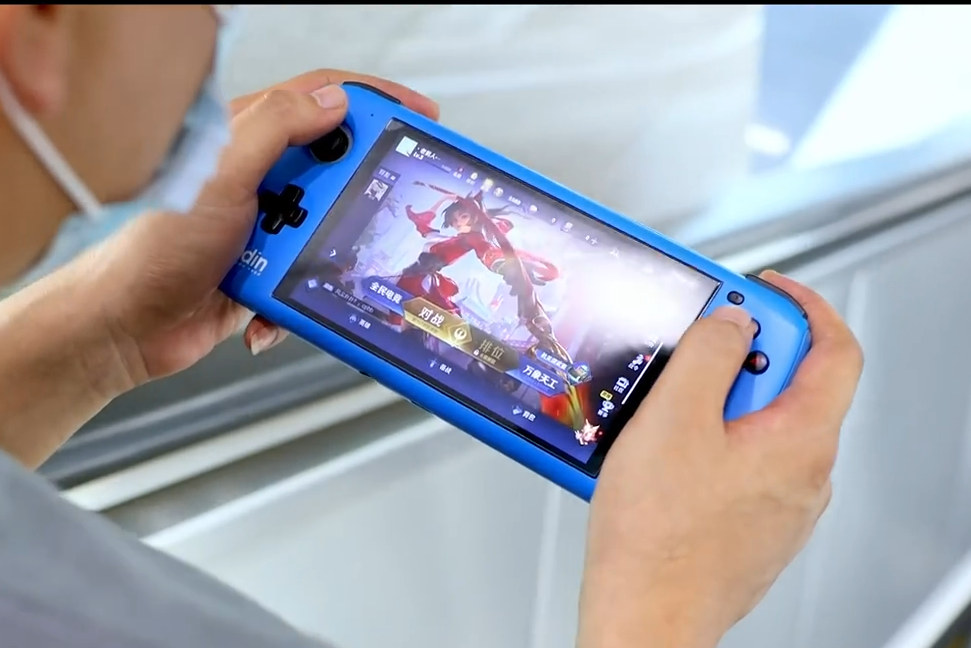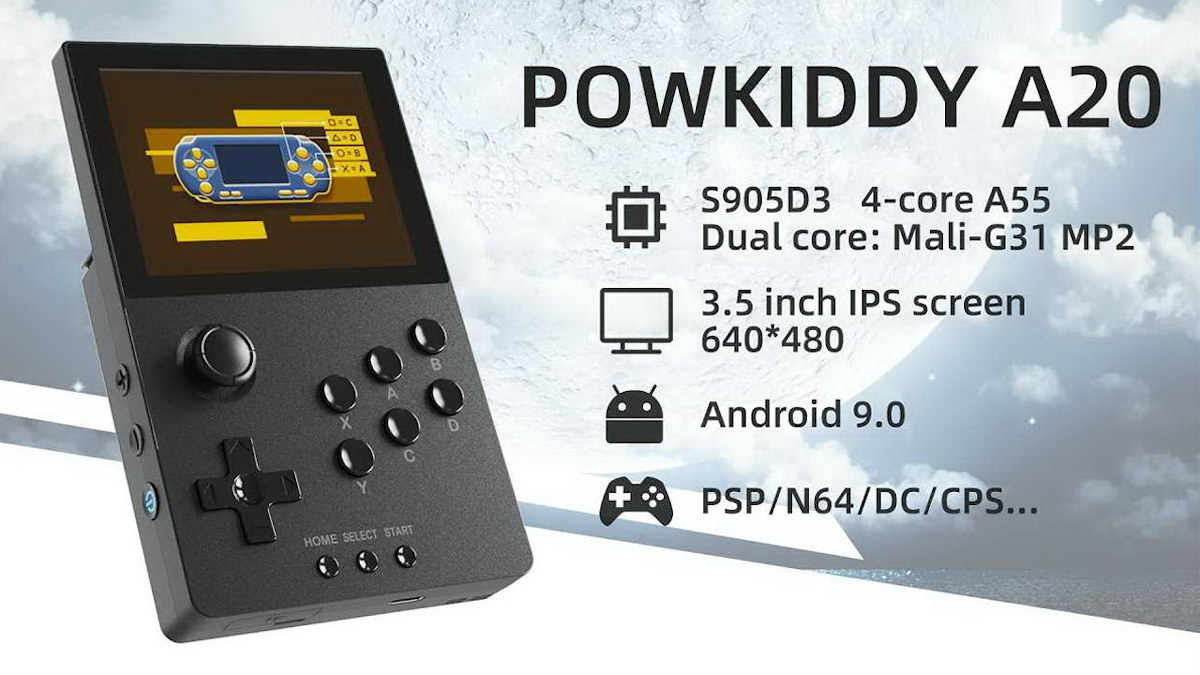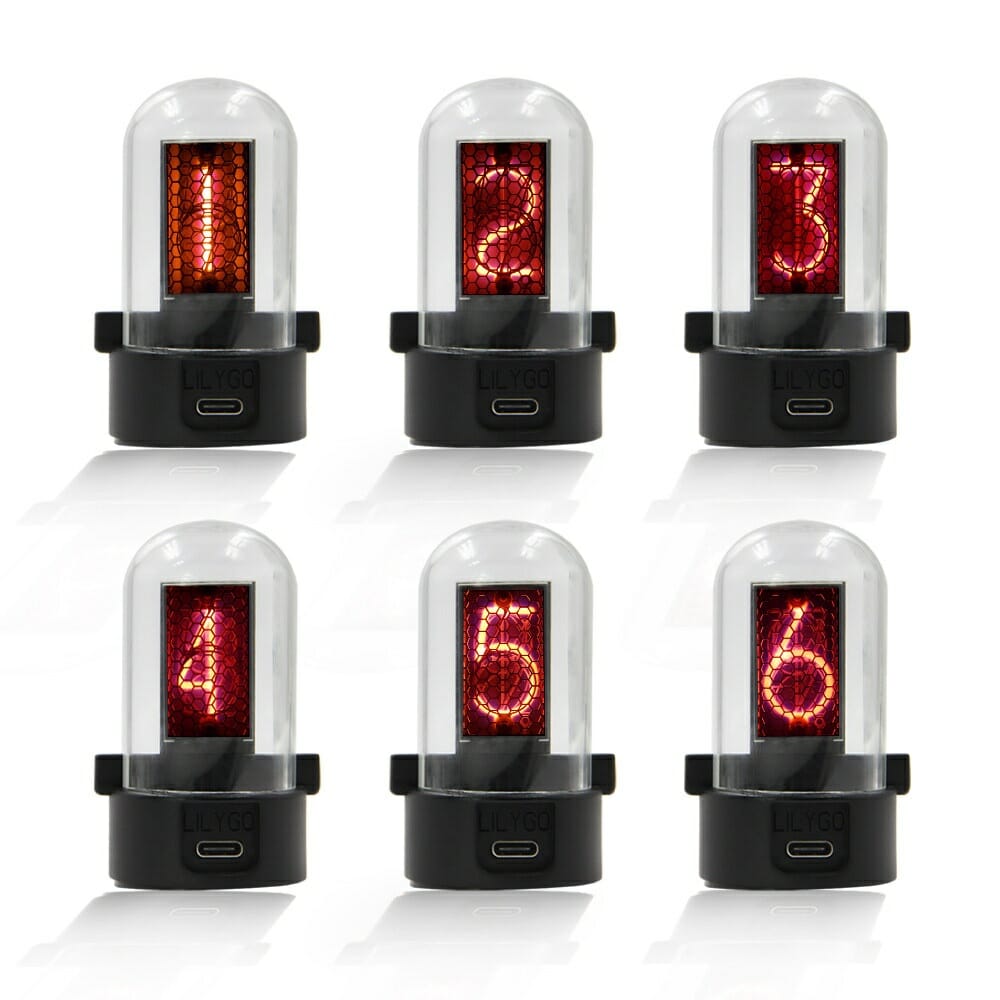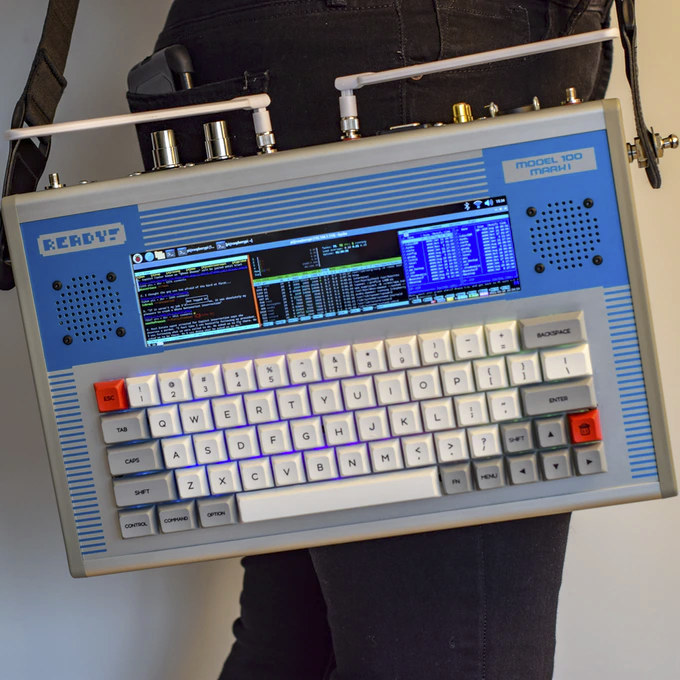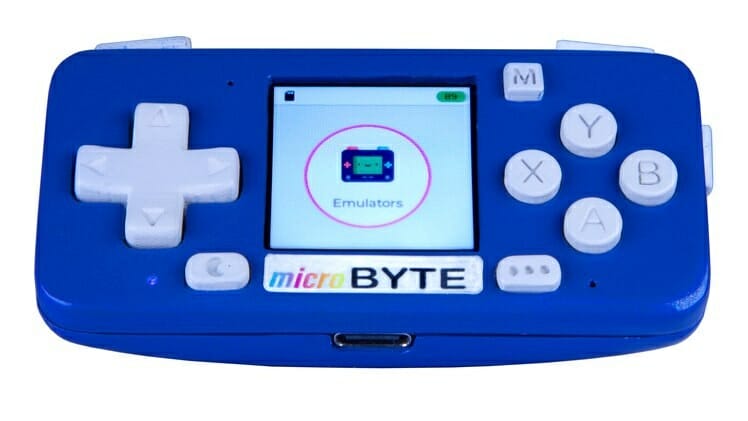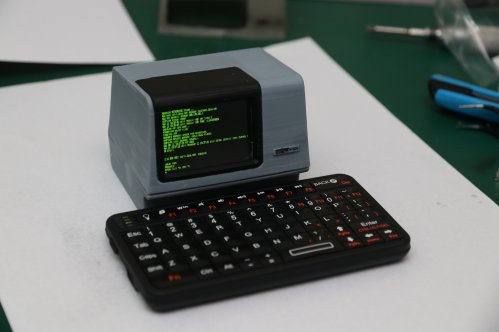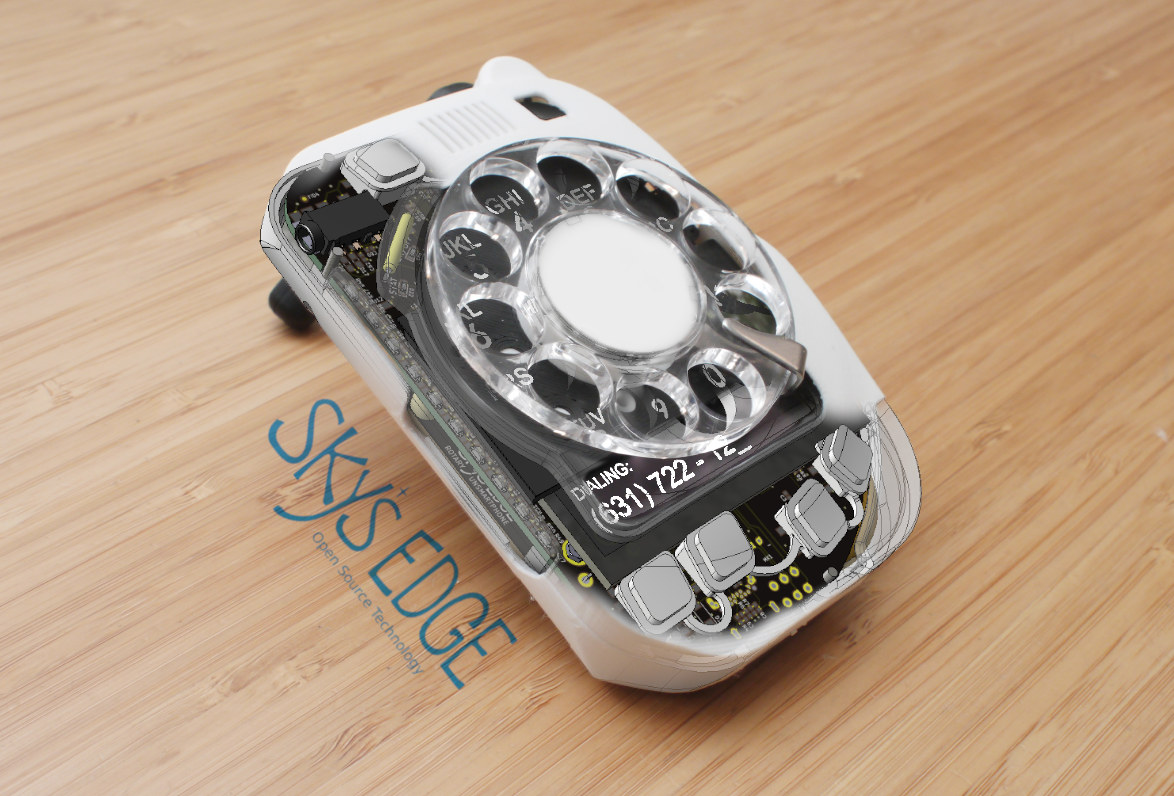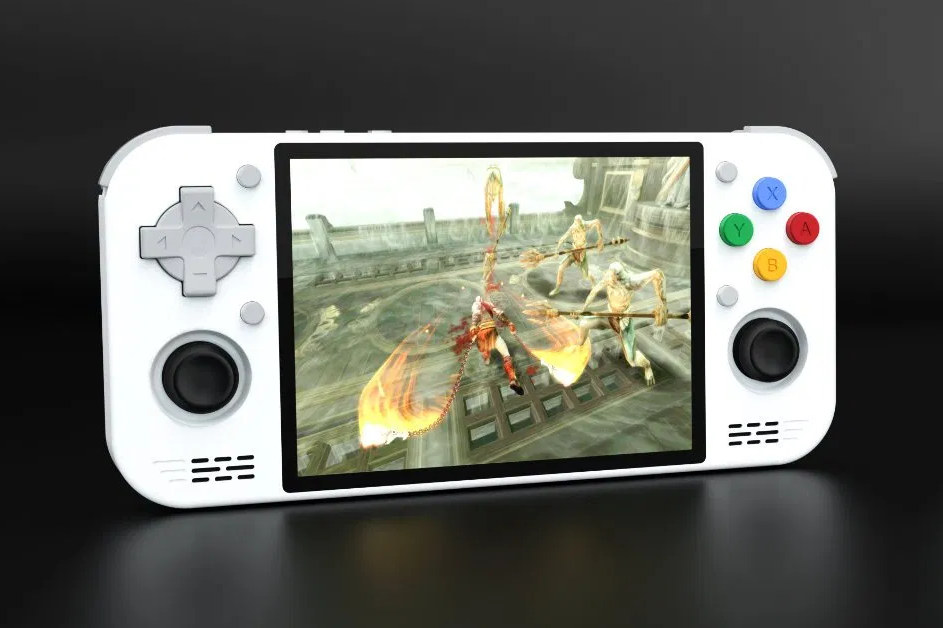AYN Odin is a 6-inch portable game console powered by Qualcomm Snapdragon 845 or MediaTek Dimensity 900 processor and offered with an optional dock with an HDMI port to connect it to a large screen, various ports for controllers, and even a 2.5-inch SATA bay. It offers a much more powerful experience, a larger display, a more recent Android 10/11 OS, and better multiplayer abilities than the Amlogic S905D3 powered Powkiddy A20 portable game console we have just covered. Three models of the Odin are offered with the Lite, Base, and Pro model differing in terms of processors, and/or storage and memory: SoC Odin Lite – MediaTek Dimensity 900 octa-core processor with 2x Cortex-A78 cores @ 2.4 GHz, 6x Cortex-A55 cores @ 2.0 GHz, Mali-G68 MC4 GPU Odin Base/Pro – Qualcomm Snapdragon 845 octa-core processor with 4x Kryo Gold (Cortex A75) cores @ 2.8 GHz, 4x Kryo Silver (Cortex A55) […]
Powkiddy A20 – An Amlogic S905D3 powered portable Android game console
Powkiddy A20 is a 3.5-inch portable Android game console based on the same Amlogic S905D3 processor found in Khadas VIM3L SBC, equipped with 2GB RAM, 8GB storage, and supported 18 different emulators for gaming. It could potentially also be an interesting platform to play with AOSP, as we’ll see below. Preliminary specifications for Powkiddy A20: SoC – Amlogic S905D3 quad-core Cortex-A55 processor @ 1.9GHz with Arm Mali-G31MP2 GPU supporting OpenGL ES 3.2, Vulkan 1.0 and OpenCL 2.0 System Memory – 2GB DDR4 RAM Storage – 8GB eMMC flash, MicroSD card socket Display 3.5-inch IPS screen with 640×480 resolution Micro HDMI port to connect to external monitor or TV Audio – 3.5mm audio jack Connectivity – 802.11 b/g/n/ WiFi 4 and Bluetooth User input – Rocker, D-Pad, A/B/C/D/X/Y buttons, volume buttons, and power button USB – 1x USB-C port for charging Battery – 3,000 mAh good for about 3.5 hours of […]
T-Nixie Tube is an ESP32 based Nixie Tube lookalike
I tend to see Nixie Tube projects regularly as I spend my days going through the news, and the projects, usually some sort of clock, typically look pretty neat. But although Nixie Tubes can still be purchased online, they are not mass-produced anymore, which may explain why LilyGo decided to create a “fake” Nixie Tube, or let’s call it a lookalike, with T-Nixie Tube that comes with an IPS LCD display driven by an ESP32 WiFi & Bluetooth WiSoC. T-Nixie Tube specifications: Wireless Module – TTGO T-Micro32 module with ESP32 V3 Bluetooth and WiFi processor, 4MB Flash Display – 1.14-inch IPS LCD display covered by glass tube USB – USB Type-C port for power and programming Expansion – 4-pin I2C/UART Grove? connector for T-WATCH sensor kit or T-FH interface sensor modules Misc – PCF8563 RTC, IR receiver, TTP223 touch button, Reset button Power Supply – 5V via USB-C port Dimensions […]
Ready! Model 100 is a retro computer shell for Raspberry Pi, SBCs, Nano/Pico-ITX boards (Crowdfunding)
We recently wrote about Devterm, a modular, retro-looking portable computer that looks like a typewriter with an extra-wide display, and takes Raspberry Pi CM3-series modules, or other compatible modules made by Clockwork based on Rockchip RK3399 or Allwinner H6. If you’re into this kind of device, but would like to use your own Raspberry Pi, another SBC, an Intel NUC motherboard, a Nano/Pico-ITX board, or even your smartphone, Ready! Model 100 single board computer expansion system may be worth looking into. Ready! Model 100 key features and specifications: Compatibility – Accommodates any hardware using 5V or 12V power input including smartphones, or arm or x86 SBCs such as Raspberry Pi 4, and compact motherboard following NUC, 4×4, 5×5, or Nano/Pico ITX form factors. Storage – Space for SSD Display – 8.8-inch 1920×480 “3xVGA” HDMI Touchscreen Video Output – HDMI (if dual HDMI supported on SBC) Audio – 10W stereo speaker […]
microByte ESP32 portable game console comes with a 1.3-inch display (Crowdfunding)
We’ve previously seen programmable, portable game consoles powered by Espressif Systems ESP32 processor with the likes of ODROID-GO or WiFiBoy32 both equipped with a 2.4-inch display, and design to play retro games or create IoT projects with a small display thanks to I/O headers. But if for some reason, you’d like an even more compact ESP32 portable game console based on the WiFi & Bluetooth SoC, Byte-Mix Labs microByte may be what you are looking for thanks to a tiny 1.3-inch square display. microByte specifications: Wireless module – ESP32-WROVER-E module with ESP32 dual-core processor @ 240 MHz, 8 MB PSRAM, 16 MB flash, and integrated Wi-Fi and Bluetooth antenna Storage – MIcroSD card slot Display – 1.3-inch ST7789 IPS Screen with 240 x 240 pixel resolution, 60 Hz max refresh frequency Audio – On-board speaker powered by a MAX98357AETE+T I2S amplifier Controls – 13x onboard buttons with 8x Inductive direction […]
Mini replica of DEC PDP-11 computer runs 2.11 BSD UNIX on ESP32 SoC
The relatively popular Digital Equipment Corporation (DEC) PDP-11 16-bit minicomputers started selling in the 70s, and were still available in the earlier 90s. While being stuck in Europe due to COVID-19 restrictions, Jeroen Domburg (aka Sprite_tm) decided to design a tiny replica of a DEC VT102 PDP-11 terminal based on ESP32 wireless SoC and running 2.11 BSD UNIX through SimH PDP11 emulator. Jeroen had to do significant work to make SimH works on ESP32 however, with notably the need to optimize the memory footprint: Obviously, ‘just port SIMH to an ESP32’ is a bit of a understatement for the effort that was needed. Even while SIMH is a pretty nice program when it comes to not using any unique APIs, it still is a system developed for a full-blown workstation and assumes RAM is cheap and plentiful. In order to get it running on an ESP32 and still have some […]
Rotary Un-Smartphone is a rotary dial phone based on Arduino, 4G LTE module
If you feel nostalgic and misses the days of the rotary dial phone, Sky’s Edge “Rotary Un-Smartphone” is an open-source hardware rotary dial phone controlled by an Arduino board and equipped with a multi-mode 4G/3G/2G module. It’s a bit more advanced that you old rotary phone with recent cellular technology, ePaper & OLED displays, quick dialing buttons, and the rotary dial can both be used to dial full phone number or quickly access your contact list. Key features of the Rotary Un-Smartphone: MCU board – Arduino board based on AtMega2560 MCU Storage – MicroSD card to store contacts list Displays – Front-side OLED and back-side ePaper displays Cellular Connectivity 4G/3G/2G connectivity via u-Blox TOBY-L2 module Voice calls and SMS (receive-only) supported SIM card slot Internal antenna; expansion space for user-supplied external antenna Audio Microphone and speaker 3.5mm TRRS headset jack Mechanical ringer bell made from polished brass; externally visible Misc […]
KTR1 high-performance Amlogic S922X portable gaming console coming soon
Hardkernel recently unveiled plans to launch ODROID-Go Super portable retro-gaming console with a larger 5-inch display at the end of January. The console is still based on the relatively low-end Rockchip RK3326 quad-core Cortex-A35 processor coupled with just 1GB RAM found in ODROID-Go Advance. It does the job for the emulators targetted by the platform, but for a wider range of emulators, a faster processor, and more memory would be nice to have. That’s what the developers of KTR1 portable game console aim to achieve with a much more powerful Amlogic S922X hexa-core Cortex-A73/A55 processor and up to 4GB RAM. KTR1 preliminary specifications: SoC – Amlogic S922X hexa-core big.LITTLE processor with 4x Arm Cortex A73 cores @ up to 1.8 GHz, 2x Arm Cortex A53 cores @ 1.9 GHz, Arm Mali-G52MP4 GPU @ 846MHz; 12nm manufacturing process System Memory – 2GB or 4GB LPDDR4 RAM Storage – 16 to 128GB […]


